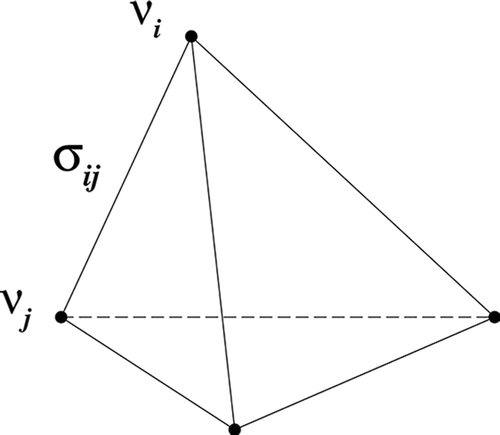Figures & data

Figure 1. Schematic representation of Model I. Arrows denote possible transitions in the presence of an LTP signal (, left panel) and of an LTD signal (
, right panel). Corresponding transition probabilities are indicated. In each panel, the left (resp. right) column corresponds to the
(resp.
) state. The model studied in this work is actually infinitely deep (after Ref [Citation82]).
![Figure 1. Schematic representation of Model I. Arrows denote possible transitions in the presence of an LTP signal (, left panel) and of an LTD signal (, right panel). Corresponding transition probabilities are indicated. In each panel, the left (resp. right) column corresponds to the (resp. ) state. The model studied in this work is actually infinitely deep (after Ref [Citation82]).](/cms/asset/624c0636-cd55-41f1-b1ca-8d3e63368d58/tapx_a_1480415_f0001_oc.jpg)
Figure 2. Plot of the output signal against time
, for several durations
of the LTP signal for parameter values
,
, and
(after Ref [Citation82]).
![Figure 2. Plot of the output signal against time , for several durations of the LTP signal for parameter values , , and (after Ref [Citation82]).](/cms/asset/26c145c7-4713-4cdd-9452-afae219811bb/tapx_a_1480415_f0002_oc.jpg)
Figure 3. An integrative figure showing the predictive model (upper panel) and sharp-electrode electrophysiology recordings of a VD4/LPeD1 synaptic pair (two lower panels). While 3 action potentials triggered during tetanic stimulation are insufficient to result in potentiation of a subsequent excitatory postsynaptic potential (EPSP) in the LPeD1 neuron, 11 action potentials elicited during tetanic stimulation result in a potentiated response, as predicted by the model (after Ref [Citation89]).
![Figure 3. An integrative figure showing the predictive model (upper panel) and sharp-electrode electrophysiology recordings of a VD4/LPeD1 synaptic pair (two lower panels). While 3 action potentials triggered during tetanic stimulation are insufficient to result in potentiation of a subsequent excitatory postsynaptic potential (EPSP) in the LPeD1 neuron, 11 action potentials elicited during tetanic stimulation result in a potentiated response, as predicted by the model (after Ref [Citation89]).](/cms/asset/605b0759-0afe-46ce-8efc-c85e27c33bd4/tapx_a_1480415_f0003_oc.jpg)
Figure 4. The fully connected network for . Neurons with activities
live on the nodes. Synapses with strength types
live on the bonds (after Ref [Citation106]).
![Figure 4. The fully connected network for . Neurons with activities live on the nodes. Synapses with strength types live on the bonds (after Ref [Citation106]).](/cms/asset/eff6ec81-5e88-4f13-b017-ce1aafcbe7e6/tapx_a_1480415_f0004_b.gif)
Figure 5. The spontaneous relaxation plasticity mechanism, with its potentiation rate and depression rate
(after Ref [Citation106]).
![Figure 5. The spontaneous relaxation plasticity mechanism, with its potentiation rate and depression rate (after Ref [Citation106]).](/cms/asset/86779b12-7f5d-4db5-a1d9-48f8d2a58033/tapx_a_1480415_f0005_oc.jpg)
Figure 6. The two possible generic dynamical regimes. Left: Regime I (one single attractive fixed point, ). Right: Regime II (two attractive fixed points,
and
, and an intermediate repulsive one,
) (after Ref [Citation106]).
![Figure 6. The two possible generic dynamical regimes. Left: Regime I (one single attractive fixed point, ). Right: Regime II (two attractive fixed points, and , and an intermediate repulsive one, ) (after Ref [Citation106]).](/cms/asset/a1cd4801-4545-4624-b8da-ad0c6bbf20cf/tapx_a_1480415_f0006_oc.jpg)
Figure 7. The two possible kinds of critical dynamical behaviour: left critical case () and right critical case (
) (after Ref [Citation106]).
![Figure 7. The two possible kinds of critical dynamical behaviour: left critical case () and right critical case () (after Ref [Citation106]).](/cms/asset/d799be55-5492-4a31-a63b-17a537d4ea3a/tapx_a_1480415_f0007_oc.jpg)
